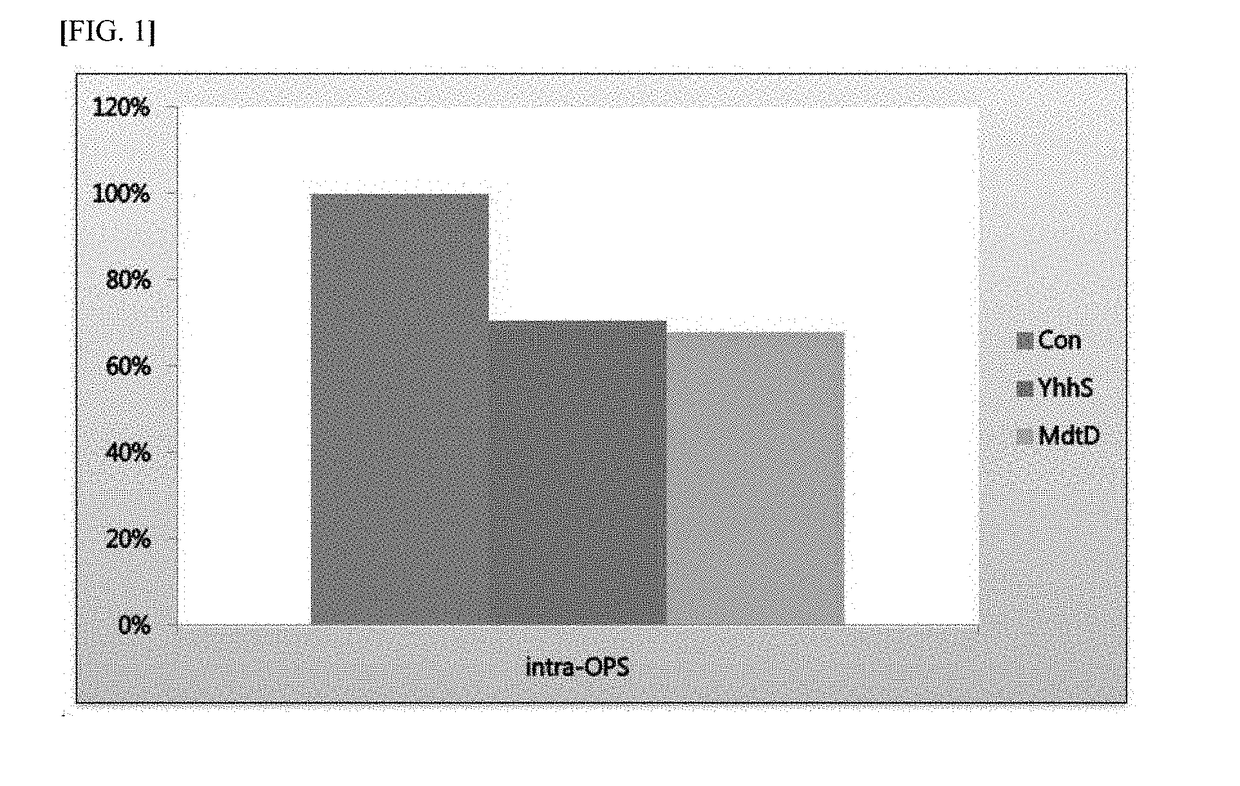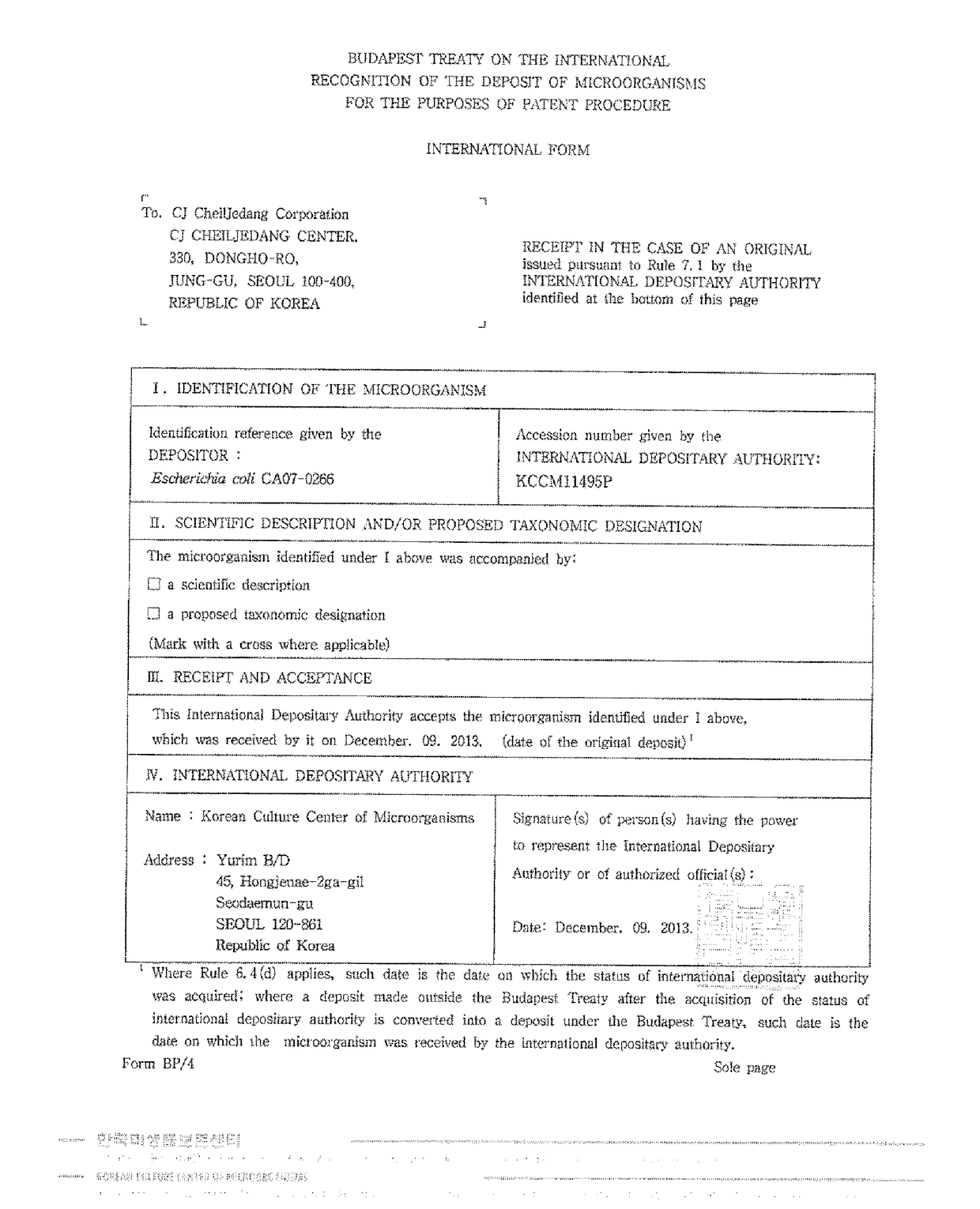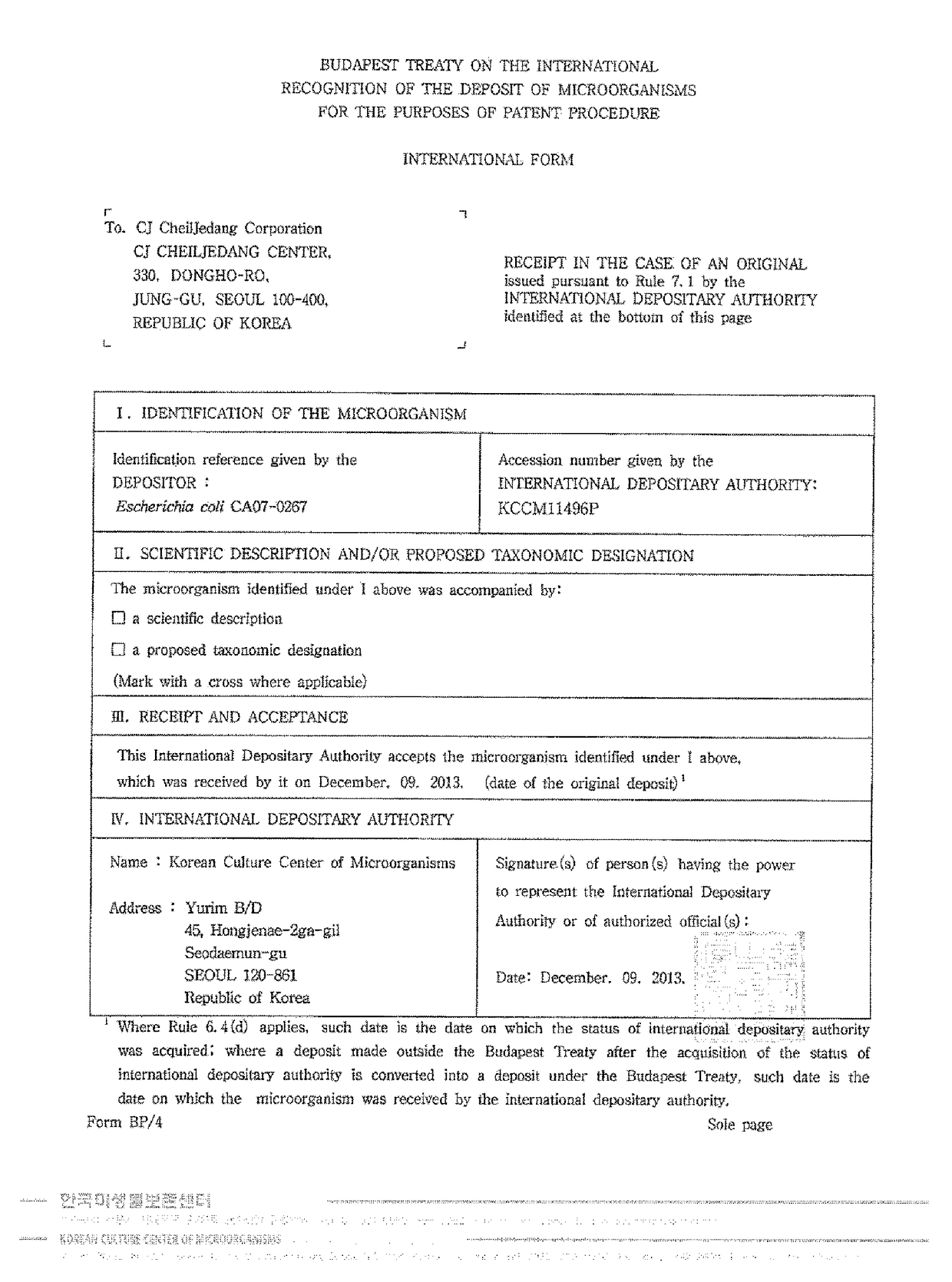Microorganism producing o-phosphoserine and a method for producing o-phosphoserine or l-cysteine using the same
a technology of phosphoserine and microorganisms, which is applied in the direction of enzymology, microorganisms, transferases, etc., can solve the problems of excessive production of precursors, ops, and high production of ops, and achieve excellent ops exporting capability, high yield of ops production, and effective use
- Summary
- Abstract
- Description
- Claims
- Application Information
AI Technical Summary
Benefits of technology
Problems solved by technology
Method used
Image
Examples
example 1
Identification of YhhS MFS Transporter and YegB MFS Transporter
[0067]In order to identify Escherichia coli membrane proteins involved in the export of OPS, a genomic DNA library of Escherichia coli K12_W3110 (ATCC27325) was screened.
[0068]Specifically, to set up the conditions in which the growth of E. coli is inhibited by OPS, a platform strain producing OPS was constructed. The platform strain for screening was a recombinant microorganism modified to reduce the activity of endogenous phosphoserine phosphatase (SerB) in the wild-type E. coli strain W3110, and was designated as “KCCM11212P” (also called “CA07-0012”; Korean Patent No. 10-1381048; US Patent Application Publication No. 2012-0190081). Using the OPS-producing strain KCCM11212P, optimal screening conditions showing growth inhibition were established by culturing the KCCM11212P, which is an OPS-producing strain, in a medium containing OPS.
[0069]Then, the genomic library plasmids of W3110 were transformed into CA07-0012 by ...
example 2
[0071]Construction of yhhS- and mdtD-overexpressing Vectors
[0072]In order to examine whether OPS-exporting capability is enhanced when the YhhS MFS transporter and YegB MFS transporter, which are involved in removing growth inhibition by OPS, are enhanced in OPS-producing strains, vectors that overexpress each of the genes were constructed. Additionally, since the present inventors confirmed that the concentration of OPS increased when the homoserine / homoserine lactone transporter RhtB was enhanced in the OPS-producing strain (Korean Patent No. 138104), the RhtB-enhanced strain was used as a positive control. In addition, the multidrug efflux transporters EmrD and YcaD MFS belonging to the major facilitator superfamily (MFS), to which MacB belongs, were also evaluated. In the same manner as in YhhS and MdtD, multidrug efflux transporter EmrD and YcaD MFS transporter, which are E. coli membrane proteins belonging to the major facilitator superfamily (MFS), were also evaluated. In thi...
example 3
[0077]Construction of a Strain with Enhanced YhhS MFS Transporter and YegB MFS Transporter and Evaluation of OPS-producing Capability
PUM
| Property | Measurement | Unit |
|---|---|---|
| temperature | aaaaa | aaaaa |
| temperature | aaaaa | aaaaa |
| high performance liquid chromatography | aaaaa | aaaaa |
Abstract
Description
Claims
Application Information
 Login to View More
Login to View More - R&D
- Intellectual Property
- Life Sciences
- Materials
- Tech Scout
- Unparalleled Data Quality
- Higher Quality Content
- 60% Fewer Hallucinations
Browse by: Latest US Patents, China's latest patents, Technical Efficacy Thesaurus, Application Domain, Technology Topic, Popular Technical Reports.
© 2025 PatSnap. All rights reserved.Legal|Privacy policy|Modern Slavery Act Transparency Statement|Sitemap|About US| Contact US: help@patsnap.com



